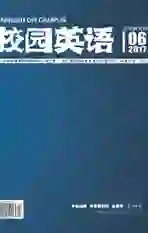Book Review of the Second Edition of Theories in Second Language Acquisition: An Introduction
2017-03-20ZhangXinju
Zhang+Xinju
The second edition of Theories in Second Language Acquisition is an ideal introductory text for undergraduate and graduate students in SLA and language teaching. It was built on the strengths of the first edition by surveying the major theories currently used in second language acquisition research.
Each chapter focuses on a single theory, written by a leading scholar in the field in an easy-to-follow style: a basic foundational description of the theory, relevant data or research models used with this theory, common misunderstandings, and a sample study from the field to show the theory in practice.
Chapter 1 was written by VanPatten and Williams. They distinguish basic concepts in theory study and 10 observations that need to be explained by SLA theories, as well as the controversy about the roles of explicit and implicit learning and knowledge in SLA.
Chapter 2 reviews early theories in SLA: behaviorism and Stephen Krashen monitor theory.
Lydia White wrote Chapter 3. She discussed study on the competence of interlanguage of second language learners from the perspective of universal grammar. It explains observation 1, 2, 3, 6 and 7.
Chapter 4 brings a functional approach to SLA: the concept-oriented approach (COA). COA talks about how language learners use different ways to express the concepts they want to express. It can explain observation 4 and 9.
In Chapter 5 Nick C. Ellis and Stefanie Wulff introduced the “usage-based” approach to SLA: associative cognitive creed (ACC). ACC thinks that language system using different language to characterize and share flow of semantics. It can explain observation 2, 3, 4, 6, 7, 8 and 9.
In Chapter 6 Robert DeKeyser introduced skill acquisition theory (SAT). SAT explains how people go through three stages in second language learning: declarative, procedural and automation stage. It explains observation 4 and 5.
Chapter 7 touches upon the theory of input processing in adult SLA (IP) by Bill VanPatten. IP answers three fundamental questions that involve the assumption that an integral part of language acquisition is making form-meaning connections during comprehension. It explains observation 1, 4, 7, 9 and 10.
In Chapter 8 Michael T. Ullman dealt with the declarative/procedural model (DP). The DP model posits that declarative and procedural memory system should paly roles in language that are largely analogous, thus independent knowledge of the two memory systems leads to different predictions for language. It explains observation 1, 5 and 9.
Chapter 9 concerns about processability theory (PT) by Manfred Pienemann and Anke Lenzing. PT believes that at any stage of development the learner can produce and comprehend only those second language linguistic forms, which the current state of the language processor can handle. It explains observation 4, 5, 7, 8, 9 and 10.
Chapter 10 talks about input hypothesis (IH) by Susan M. Gass and Alison Mackey. IH explains second language learning process through phenomena of learners receiving input and producing output. The hypothesis explains observation 1, 2, 5, 7 and 10.
The topic of Chapter 11 is sociocultural theory (SCT) and second language development. SCT answers to what extent that we can regulate mental activity through the second language acquisition. It explains observation 1, 2, 4, 5, 8 and 10.
Chapter 12 centers on complexity theory (CT) of Diane Larsen-Freeman. CT tries to explain the function of emergent, complex, dynamic, open, adaptive, and nonlinear system. It explains observation 1, 3, 4, 5, 6 and 7.
Chapter 13 was a summary by Lourdes Ortega. She compared the 10 selected theories according to how they deal with the following 6 aspects: observations explained, nature of language knowledge and language cognition, nature of interlanguage, role of the first language, contribution of linguistic environment and role of instruction.
This book is designed to provide a consistent and coherent presentation for those new to the field that seek basic understanding of theories that underlie contemporary SLA research. Researchers will also find the book useful as a “quick guide” to theoretical work outside their respective domains.
References:
[1]VanPatten,B.&Williams,J.2015.Theories in Second Language Acquisition:An introduction.New York & London:Routledge.
